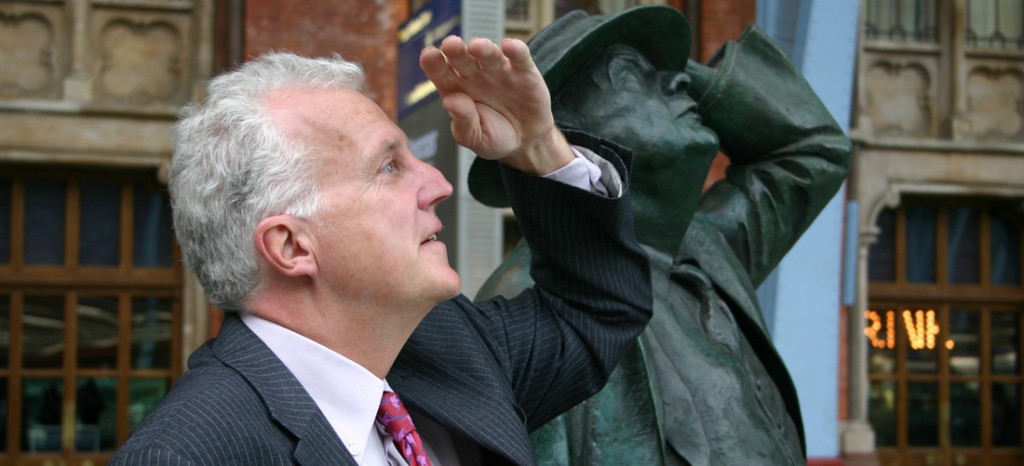Review by Andrew Adonis
Published: October 4 2009 21:17 | Last updated: October 4 2009 21:17
Blood, Iron & Gold: How the Railways Transformed the World
By Christian Wolmar
Atlantic Books £25
High-speed rail, largely the preserve of Japan and France until the 1990s, is sweeping across Europe and Asia. China’s network will be nearly as large as the rest of the world’s put together when the 1,300km Beijing to Shanghai line is completed in 2012. Even the US, where passenger rail has almost died, is planning a high-speed line between Los Angeles and San Francisco.
The technology is developing fast. Within five years 400km/hr is likely to be practical on high-speed tracks, a step change from the 300km/hr pioneered by Japan and France. Beijing to Shanghai may take just four hours.
This high-speed revolution makes Christian Wolmar’s superb new history of the world’s railways timely. In one brilliantly written volume Wolmar relates the story of the first global rail revolution, which began with the Liverpool and Manchester Railway in 1830.
The pace of change was astonishing. Within 15 years, the modern railway map of Britain had taken shape. The world was literally watching. American, continental and Russian envoys were at the opening; by 1850 virtually every country with aspirations to modernity was following suit.
Between 1830 and 1900 a billion kilometres of railway were built worldwide. In Wolmar’s words, between the first and last quarters of the 19th century “the railways transformed the world from one where most people barely travelled beyond their village or nearest market town to one where it became possible to cross continents in days rather than months. Their development created a vast manufacturing industry that ensured the Industrial Revolution would affect the lives of virtually everyone on the planet. Everything from holidays to suburban sprawl and fresh milk to mail order was made possible.”
Wolmar dismisses the notion that 19th and early 20th-century railways were simply a private-sector affair. Abraham Lincoln, a pro-railway lawyer before becoming US president, was the transcontinental railroad’s most fervent advocate. Driving the Pacific Railroad Act through Congress in 1862 to make possible the 1,780 mile line, he endowed it with tens of millions of taxpayer dollars in loans, grants and land.
Similarly, as chairman of the state committee on the Siberian railroad, Tsar Nicholas II oversaw the construction of the 6,200 mile Trans-Siberian railway. Bismarck and Clemenceau both started to nationalise their respective railways in the 1870s. Cecil Rhodes, Kitchener, Hitler, Mussolini, Stalin and Mao also have notable parts in the story. So does the Emperor of Japan, who appeared in full state regalia before foreigners for the first time at the opening of the Tokyo to Yokohama railway in 1872, and Lord Dalhousie, the British Viceroy of India, who declared in 1853 that “the complete permeation of these climes of the sun by a magnificent system of railway communication would present a series of public monuments vastly surpassing in real grandeur the aqueducts of Rome, the pyramids of Egypt, the Great Wall of China, the temples, palaces and mausoleums of the great Moghul monuments”. So much for private enterprise.
The centrality of railways to 19th- and 20th-century warfare is also well told. Troops and equipment could be moved speedily in unprecedented quantities. On the western front in the first world war, railways helped the defenders since advancing armies found rail supply lines destroyed while defenders retained them. The heightened rail traffic before each offensive, spotted by air reconnaissance, also forewarned defenders.
Such insights and anecdotes abound. Norway is the only country that has never had different classes on its trains. Russia and Spain both chose different gauges to the standard 4ft 8.5in, to forestall foreign invasion. Wolmar’s own father, a White Russian who fled by rail from Kiev to Odessa after October 1917, was one of the able-bodied men sent into the woods to cut down trees to fuel the engine.
For Britain, it is a tale of grandeur and decline. Until the 1870s there was hardly a railway development in the world without British engineers and equipment, an extraordinary half-century of technological supremacy. All the more odd, then, that the UK should have stood largely apart from high-speed rail. Elsewhere, like the first rail revolution, it is mostly state-facilitated. François Fillon, the French prime minister, describes the TGV as one of the two infrastructural transformations of modern France, the other being nuclear energy. In Asia, state direction is even stronger. To catch up, Britain needs a strong governmental lead.
The writer is UK transport secretary.
